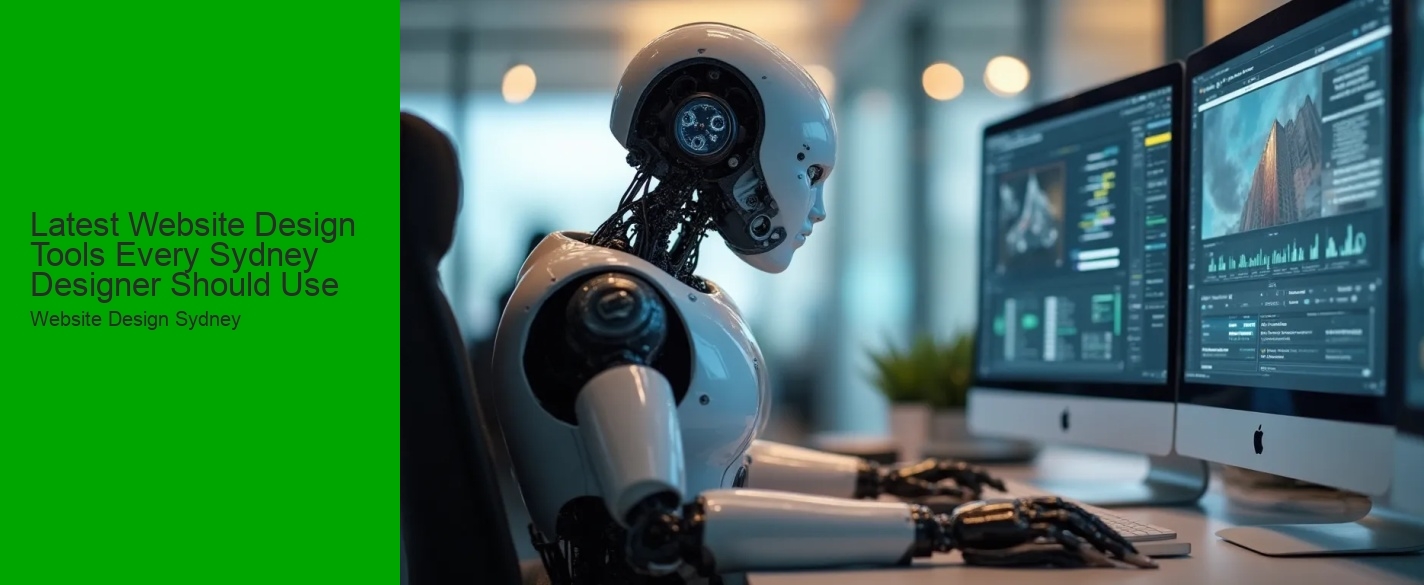Top Website Design Tools for 2023
Hey there! Best Website Design Australia. So, when it comes to picking the top website design tools for 2023, Sydney designers have got a bunch of awesome options at their fingertips. First up, you cant go wrong with Figma! Its been a game-changer for many designers because it allows for collaboration without needing to leave your browser. Seriously, who needs a separate app these days?
Another tool that's making waves is Adobe XD. Now, while it might not be as user-friendly as some other options out there, it still packs a punch in terms of functionality. Plus, if youre already familiar with Adobe's suite, the learning curve isn't too steep. Honestly, it's great for those who want to stick with what they know while trying something new.
Then there's Sketch, but let's be real, it's been overshadowed by Figma and XD in recent years. Not that it's bad – it just doesn't seem to be getting as much love from the younger generation of designers. Still, if you've got a bunch of legacy projects to work on, Sketch might be worth keeping around.
For those who prefer something simpler and more straightforward, Webflow could be a good call. It's fantastic for building websites visually without writing a single line of code. That said, it's not the best choice if you're looking to dive deep into custom coding. But hey, sometimes you just need to get things done quickly!
And of course, we can't forget about Canva. It's super easy to use and perfect for creating graphics and designs on the fly. While it might not be as powerful as some of the other tools mentioned, it's still incredibly useful, especially for designers on tight deadlines or those who need to whip up quick visuals for social media posts.
In short, there's no shortage of great website design tools out there. It really depends on what you're after and what you're comfortable with. Just remember, no tool can replace the creativity and skill of a talented designer. Happy designing!

Features to Look for in Design Software
Okay, so youre a Sydney designer scoping out the latest website design tools, eh? Well, mate, it aint just about shiny interfaces and whatnot. You gotta look deeper!
First off, ease of use (obviously!). Aint nobody got time for clunky software that requires a PhD to operate. The learning curve shouldnt be a cliff face, ya know? It should be...gentle. And intuituve.
Then theres collaboration. Now, i think, arent we all sick of working in silos? The best tools let you share designs, get feedback, and work together in real time. Imagine, a shared project, everyone adds their brilliant ideas! No more emailing giant files back and forth. Ugh!
Dont overlook responsiveness. In this day and age, if your software doesnt let you easily design for different screen sizes, well, what are you even doing? Mobile-first is the name of the game, and your tools need to support that. Responsiveness isnt just a feature, its a necessity.
And then theres integration. Does it play nice with other tools you already use? Can you easily import and export files? You dont want to get stuck in a walled garden, do ya? (Think about it!).
Finally, lets not neglect the community. Are there active forums, tutorials, and support available? If you get stuck, you want to know theres someone out there who can help, right? A strong community often means a strong product.

Dont just jump on the bandwagon of the latest trend, alright? Consider what you need, what your workflow is, and choose tools that actually make your life easier! Good luck.
Collaboration Tools for Teams
In the fast-paced world of web design, staying ahead of the curve is crucial, especially for designers in Sydney. With so many collaboration tools available, it can be a bit overwhelming to choose the right ones. However, when teams work together efficiently, the results can be spectacular!
First off, let's talk about communication. Tools like Slack and Microsoft Teams have become staples for many. They allow designers to share ideas in real-time, which is super important when you're working on tight deadlines. You wouldnt want to waste precious time waiting for feedback, right? Plus, with integrations available for various design apps, it makes sharing files and updates a breeze.
Next up, there's Figma, a game-changer for collaborative design. This tool enables multiple users to work on the same project at once, which is something you cant do with traditional software. Imagine designing a website and having your team members jump in to make changes on the fly! It's like having a virtual brainstorming session without anyone needing to be in the same room (or city, for that matter).
Also, don't forget about project management tools like Trello or Asana. These platforms help keep everything organized and ensure no task slips through the cracks. You can assign tasks, set deadlines, and even track progress. It's a lifesaver when juggling multiple projects at once, which, let's be honest, many designers do!

Now, while some might think they can manage without these tools, its really not ideal. Collaboration is key in the design process, and using the right tools can make all the difference. So, for Sydney designers looking to elevate their web design game, embracing these collaboration tools is essential. After all, teamwork makes the dream work, and with the right resources, you'll be creating stunning websites in no time!
User Experience Enhancements with New Technologies
In today's fast-paced digital world, user experience (UX) has become more crucial than ever, especially for website designers in Sydney (or anywhere, really). With the rise of new technologies, it's exciting to see how these tools can enhance the overall experience for users. Designers now have access to a whole range of resources that can make their websites not just visually appealing, but also highly functional!
First off, let's talk about prototyping tools. You know, the ones that allow designers to create interactive mockups quickly? Tools like Figma and Adobe XD have revolutionized the way we design. They enable designers to collaborate in real-time, which is a game changer! No more endless email chains or feedback forms that get lost in the shuffle. Designers can actually see changes happening as they're made, which surely makes the process smoother and more efficient.
Then theres the incorporation of AI-driven design tools. Wow, isn't that something? These tools can analyze user behavior and suggest design improvements based on real data. It's like having a personal assistant who knows exactly what your users want (and need). For instance, tools like Canva have integrated AI features that help in creating stunning graphics in a snap. But hey, don't think you can just rely on technology alone; a designer's intuition and creativity are irreplaceable!
Moreover, let's not forget about accessibility tools (which are often overlooked). It's essential to design websites that everyone can use, regardless of their abilities. Tools like Wave and Axe allow designers to evaluate their sites for accessibility issues. Custom Cms Website Design Sydney For Home Insulation Experts By using these, designers can ensure that they're not excluding any potential users, which is something we definitely don't want to do!
Lastly, the rise of no-code platforms shouldn't go unnoticed! With tools like Webflow, even those who aren't coding wizards can create complex websites. This democratizes design, allowing more people to express their ideas online without getting bogged down by technical limitations. It's pretty cool that you don't have to be a developer to build something amazing!
In conclusion, the landscape of website design is constantly changing, and it's thrilling to see how new technologies can enhance user experience. Designers in Sydney (and beyond) should definitely take advantage of these tools to create more engaging, accessible, and user-friendly websites. Embracing these advancements not only boosts creativity but also leads to happier users. So, let's get designing!
Cost-Effective Options for Freelancers and Startups
Hey there Sydney designers!
Latest Website Design Tools Every Sydney Designer Should Use - Subscription Website Design Sydney For Maintenance Service Providers
- Interactive Small Business Web Design For Sydney Cabinetmakers
- Custom Plugin Website Design Sydney For Solar Panel Installers
- B2c Website Design Sydney For Residential Painting Contractors
Another option is Figma. This one is kinda like Sketch, but its web-based and collaborative. So if youre working on a project with a team or even just want to share your designs with clients in real-time, Figma is fantastic. Whats more, their free tier is pretty generous - you get unlimited projects and collaborators (although storage is limited). Its definitely worth checking out.
Oh, and dont forget about WordPress! While its not exactly a design tool per se, its an incredible platform that lets you build custom websites using themes and plugins. Wordpress Small Business Web Design For Sydney Painters Plus, you can get started for free with their hosting service (though its pretty basic). If youre willing to invest a bit more time learning how to work with it, you can create professional-looking sites without spending a fortune on software.
Sure, there are premium tools out there that offer more advanced features, but sometimes those extra bells and whistles arent necessary. These options here show that you really can achieve great results without breaking the piggy bank. So why not give them a try and see what works best for you? Who knows, maybe youll find a secret weapon that makes your design process way easier!
Integration Capabilities with Other Platforms
Okay, so, like, when we talk about the hottest website design tools for Sydney designers, we cannot ignore integration capabilities with, like, other platforms. I mean, seriously! Its not just about having a fancy interface, is it? (Although, yeah, thats nice too). A truly useful tool, especially in a collaborative environment, needs to play well with others.
Think about it. Youre working with, say, a marketing team rocking HubSpot, or maybe the sales guys are all about Salesforce. Your design, beautiful as it is, cant exist in a silo. It needs to seamlessly connect, push data, and pull information. If your design software doesnt integrate with these crucial platforms, youre basically creating extra work, unnecessary steps, and, frankly, a big ol headache. Nobody wants that!
So, what does good integration actually look like? Well, it might involve direct connections to CMS platforms like WordPress or Drupal, ensuring easy content updates. Or, perhaps, its about integrating with project management tools like Asana or Trello, keeping everyone on the same page re: progress and feedback. It's also important to consider integrations with e-commerce platforms if youre designing online stores; Shopify or WooCommerce are key.
Frankly, a tool that does integrate streamlines workflows, reduces errors, and ultimately, makes the entire design process more efficient. It means you can focus on the creative stuff, the real design, instead of wrestling with incompatible systems. And lets face it, isnt that what we all want?! Ugh, yeah!
Latest Website Design Tools Every Sydney Designer Should Use - Wordpress Small Business Web Design For Sydney Painters
- Accessible Website Design Sydney For Home Staging Professionals
- Responsive Website Design Sydney For Kitchen And Bathroom Installers
- Elegant Website Design Sydney For Landscaping Architects




